#insect facts
Text
Did you know, that wasps can create their own paper? This material is what is used to create wasp nests. When a lone Queen wasp finds a good place to build, she begins to chew on wood fibres, mixes it with her saliva and then spits it back out to form walls. The nest starts as a durable, vertical stalk and then she builds an inverted cup shape that has 6 sided cells, as a nursery for larva. She also sprays this first part of the nest with a chemical that is able to repel ants.
When she is done with the first part, the Queen wasp lays eggs in the cells she created and when they then reach adulthood, these worker wasps will then continue to build the nest, allowing for the Queen to resign to egg laying.
It can typically take a hive around 2-4 weeks to build a full, finished nest.
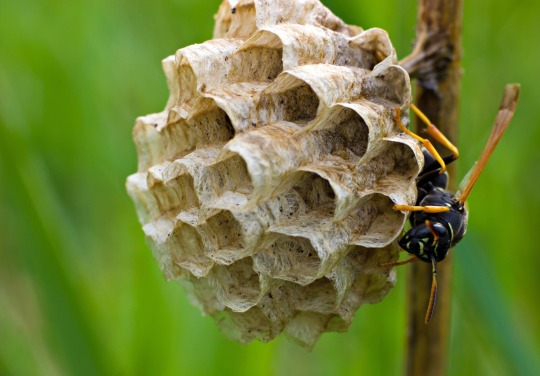
#animal facts#animals#facts#random facts#wasps#wasp#wasp nest#wasp nests#wasp facts#wasp fact#insects#insect#insect facts#insect fact#queen wasp
227 notes
·
View notes
Text
earwig (order Dermaptera) info-dump bc they're really cool insects that have really unique behaviors
- there are about 2,000 different species of earwigs, 10 of which are native to north america. earwigs when in there native ranges are extremely beneficial to the environment
- the european earwig (Forficula auricularia) is an invasive species in north america, and unfortunately is now a super common insect to see
- earwigs are edible! i have been told they taste like soft shell crab
- earwigs are extremely maternal, once a female earwig legs eggs she will care for them until adulthood. this is rare, only about 1% of all insects are maternal
- hump earwigs (Anechura harmandi) commit what's called matriphagy. after months of the mom raising her young, the offspring will then consume her
- sometimes earwig moms will abuse/neglect their young. those young will then share food and take care of each other, typically those behaviors are only seen in social Hymenoptera (bees, ants, and wasps)
- earwigs have some of the most intricate wings. there's about 20 different fold lines, and fold up to be 10x or more smaller than when the earwig is in flight. no other animal wing is this complex
- the giant earwig (Labidura herculeana) now extinct grew to be about 3 inches long
bonus photo of my earwig tattoo :)

#earwigs are so neat#order Dermaptera#dermaptera#earwigs#insects#bugs#entomology#special interest#infodump#tattoo#bug talks#bug tattoo#bug facts#insect facts
56 notes
·
View notes
Text
bugs.
you agree. reblog.
344 notes
·
View notes
Text
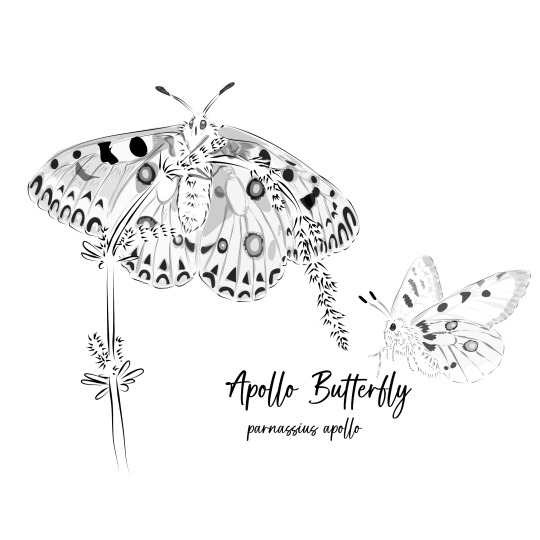
Here is my nature sketch of the Greek Apollo Butterfly 🦋. Not only are they adorably soft and fuzzy, but they have beautiful painted faces.
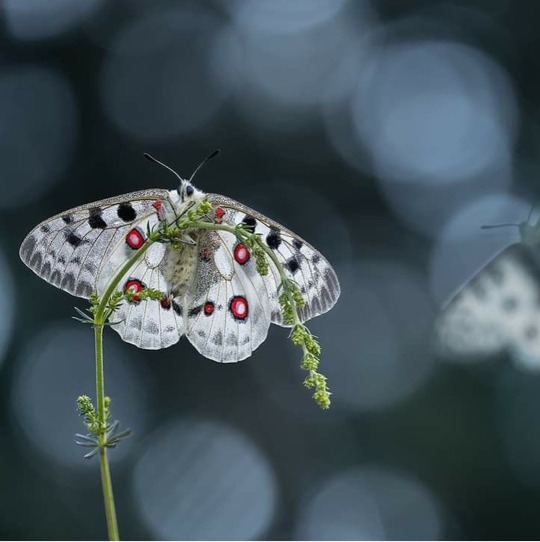
If you look closely, you will see two eyes, a nose with nostrils, red cheeks, and a smile. Some Apollo butterflies even have a mustache and other markings. Each one has a unique face.


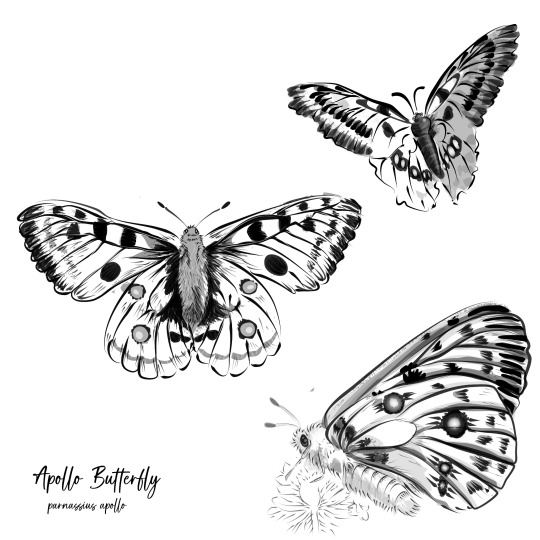
Butterflies in the ancient world often symbolized souls of the dead. They are not a common motif in Greece; they were much more popular in Northern Europe, Rome, and in the Middle East.




One famous depiction of butterflies are the ancient bracelets found in the tomb of Egyptian Queen Hetepheres (2600 BCE). The bracelets were made in ancient Minoan Greece out of pure silver given to her as a gift.
Alright, that is my Nature and History rant on Greek Butterflies! 💕🐍
#ancient greece#greek mythology#ancient history#butterfly#ancient egypt#ancient jewelry#insects#insect facts#nature sketch#nature#apollo#zoology#entomology#bugs#insect#sketchbook#sketch#fun facts#psyche#egyptian
43 notes
·
View notes
Text
Random Fact #6,531
No bees native to South America have stingers.
There are bees with stingers in South America now, but they are not native to the Americas, they were brought over from Africa and Europe.

#did you know#random facts#random fact#little known fact#random factoid#random factoids#nature facts#south america#bees#history facts#europe#africa#animal facts#insects#insect facts
40 notes
·
View notes
Text

A common Reddish-Brown Stag Beetle (Lucanus capreolus). The size and shape of the beetle's mandibles are indicative of its sex–large and crescent-shaped pincers indicate that the beetle is male.
There are about 1,200 member species in the stag beetle family. The name 'stag beetle' is derived from the large and distinctive mandibles possessed by the males of most species, which are reminiscent of the imposing antlers possessed by male deer, or stags.
Despite their somewhat small size—most species grow from 5-12 cm in length—these beetles pack a punch! According to atlasofscience.org, "Being bitten by a male stag beetle feels as if you are balancing two soda cans on tooth picks (one for each jaw) on your finger. This is such a large increase in bite force, that males even risk to break their jaws if they would bite in full force. Male stag beetles avoid this by carefully restraining their bite force." I have been bitten by one of these guys before, and can certify that they are not to be underestimated!
link to cited article
31 notes
·
View notes
Text
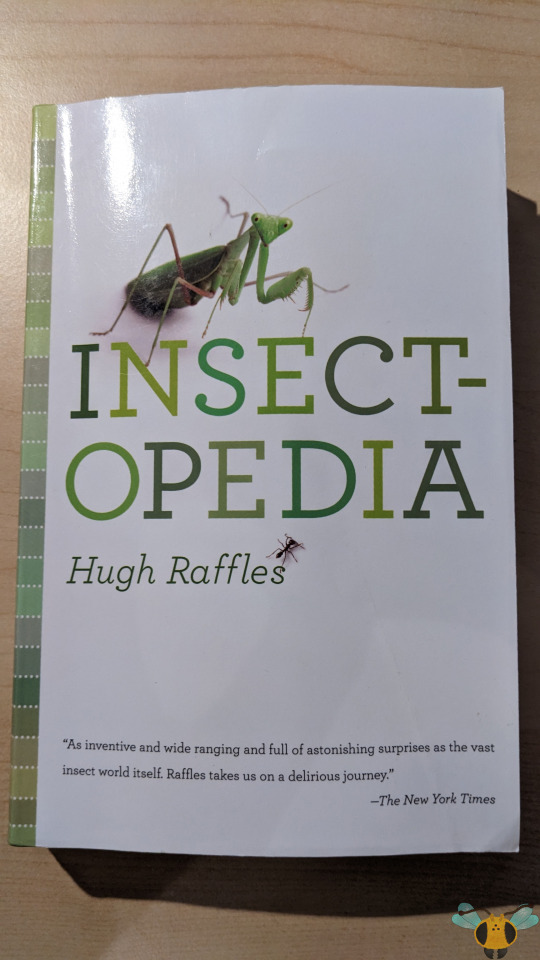




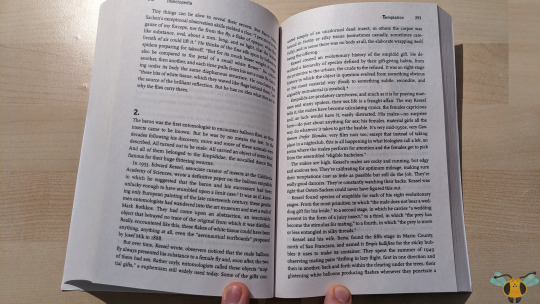
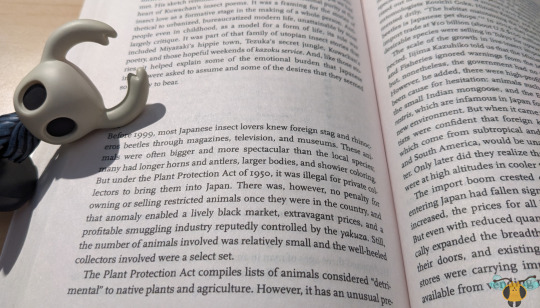
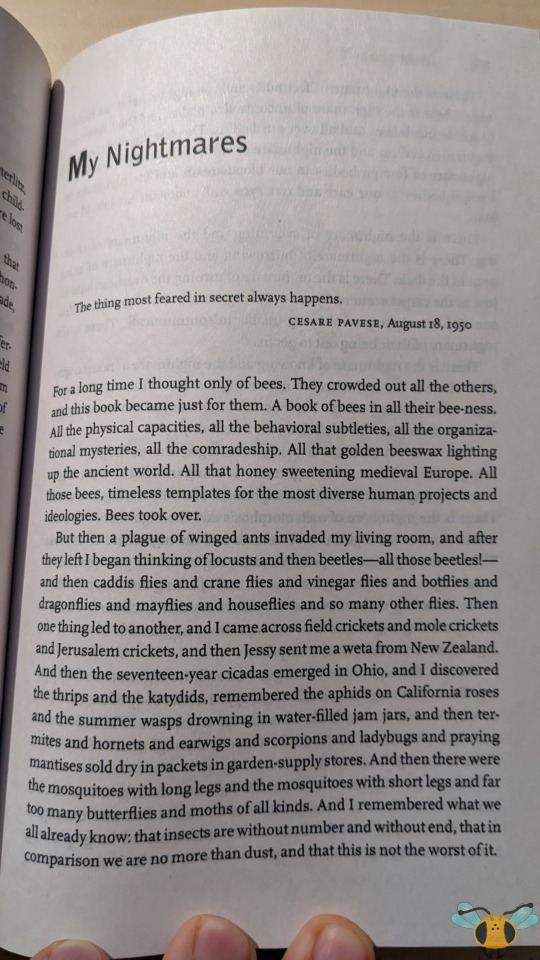
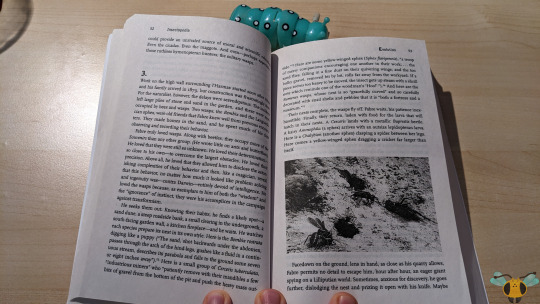
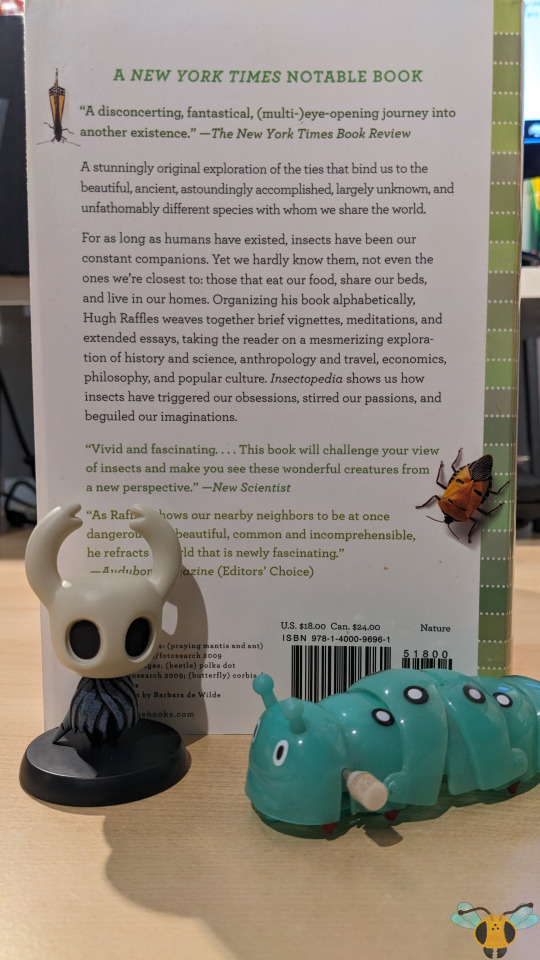
Insectopedia, by Hugh Raffles
Do not judge this book by its cover! Despite what the name would suggest, this is not a comprehensive encyclopedic volume that encompasses insect knowledge related to matters like species, classification, diets, orders and general factoids. No, no, this is a different branch in the world of insect exploration. The passages, stories and analysis of 'Insectopedia' are more philosophical, anthropological (based on human society and culture) rather than locked into a box of science and research (though they do play a big part of this book). Compared to the previous literature showcase, 'Sting of the Wild', this book is far more unconventional and explores a wider range of topics, but having read it twice now, I think it offers something that very few other works can. It's one thing to outline insect facts, research, discoveries and their place in the world; it's another thing entirely to examine how insects impact the world & humanity, how humanity impacts insects, how cultures, traditions and ideas can be shaped through our hexapod friends. This book embraces the eclectic and shares it as a multitude of essays and stories that truly highlight how curiosity and fascination can develop into passions, discoveries, introspections, livelihoods and in some cases, obsessions. This collection of musings and insight is also reinforced by a citation heavy note section and bibliography and countless anecdotes across 26 chapters (named alphabetically).
In a sense, it resonates like a collection of short stories or a scientific journal publishing with a great scope of content and findings to comb through. My personal favorite chapters are the ones on 'Languages' (see Picture 5) and the 'O' chapter (not pictured), which deserves to be experienced fresh. All I'll leave you with is the name of that chapter, 'On January 8, 2008, Abdou Mahamane Was Driving through Niamey...". Both are among the longest chapters this work has to offer, but there are many more bite-sized chapters that offer stories that are short and sweet. There's little to no connectivity between each chapter and though the material may bounce back and forth wildly and some chapters barely reference insects (though nature is still an important focus), reading earlier chapters will likely reinforce appreciation for the subject material in the later sections. All that said, I think this book would be best recommended for those entering high school or university and to those who like their material dry and matter-of-fact, but also engaging (somewhat like a passionate lecture). Once again, the subject matter is the onus for a small age-gate or maturity-gate for this book, but it is a small gate. In particular, chapters C, J, Q and S are intended for more mature readers, but if you can understand and handle the subject matter, great knowledge will be your reward (for example, Chapter 'C' is 'Chernobyl', featuring a woman who examines radiation-induced insect deformities).
I know I've been somewhat vague on the exact information that can be gleamed from Insectopedia, but this is a deliberate choice. The material in this book should be read with an open mind and there shouldn't be any spoiled surprises for the journeys and insights discussed from cover to cover. If you seek examples for the type of material this book has to offer, Pictures 3-9 offer the tiniest gate to sample what Insectopedia can offer (and as prefaced at the beginning of the book, "The minuscule, a narrow gate, opens up an entire world" - Gaston Bachelard). You will not find identification guides in it nor will you find ways to distinguish one insect order from another, but it may grant some enlightenment or stir passion, discussion or a curiosity to further explore the ideas presented within and how they've evolved since the book's publishing in 2010. This may provide a great starting point for any students in need of a thesis topic! I suppose Picture 10 (presented by the Knight and a glow-in-the-dark Caterpillar) summarizes it far better than I could. I may have expected something more conventional in the beginning, I am definitely recommending this book and I'll be reading it again after I explore some of the papers within the bibliography. For me, this was the surprise of the year, and while there are times where I think it may be to eclectic (nearing "all over the place"), I was exposed to many new areas of study and I appreciate the stories and points of view I would never have heard had I stuck to only the usual material.
For additional insect literature, you may visit the Blog Resources page.
#jonny’s insect catalogue#insect field guide#hugh raffles#insectopedia#hugh raffles insectopedia#insect pictures#insect facts#essays#literature#philosophy#field guide#nature#entomology#essay collection#insects in culture#insect literature#insect musings#rambling#insect topics#insect toys#insect wind-up toy#wind-up toy#wind-up caterpillar#fangamer#hollow knight#hollow knight figurine#knight figurine#Alex Colvin knight mini figurine#hollow knight figure
14 notes
·
View notes
Photo

@catsruleokay OH BOY I GET TO LEARN YOU A THING
It was thought for a long time that grasshoppers and locusts were two different insects, because they look different and have vastly different behaviors. But it TURNS OUT that they are the SAME EXACT INSECT. A locust is a grasshopper in Swarm Mode (tm).
(note: this is only true for a specific family of grasshoppers, Acrididae. There are no locust swarms in North America because the grasshoppers here don’t have a swarming phase.)
These species of grasshoppers generally live non-social lives, just kind of hopping and grassing and not being too scary. But overcrowding causes them to undergo a FANTASTIC TRANSFORMATION which includes changing their look and overall behaviors and suddenly becoming very social, very horny and VERY hungry. Basically the “overcrowding” signal triggers a serotonin dump into their brains, and it’s suddenly LOCUST POWAAAAH MAAAAKE UP!
How do grasshoppers know they’re being overcrowded, you ask? Is it by sight? By sound? NO! It’s by touch! But they can’t just bump into each other once-- the grasshoppers have to experience a Grasshopper Collision several times a minute for about four hours. Then they start flying, they start fucking, and they start eating. Theoretically you can just bash two grasshoppers together while watching the extended cut of The Lord of the Rings: Fellowship of the Ring (with DVD extras) and turn them into locusts, but I don’t know why you’d do that!
I am absolutely not an entomologist and I don’t even like bugs but the instant I learned about The Locust Touch I had to tell other people.
37 notes
·
View notes
Text


beetle i made for art class! its a rhino beetle :]
Rhino Beetles (Dynastinae)
Some can life up to 100 times there own weight
They are some of the largest beetles in the world
6 notes
·
View notes
Text
Wasp fun facts!
Most commonly known wasps are ‘social wasps’ of the family Vespidae, which is a eusocial group that lives together in a hive. Like bees!
Like bees, ants, and other members of the Hymenoptera order, these ‘social wasps’ are haplodiploids, which means that their sex is determined by whether or not the egg they hatched from was fertilized. (this means that males have half the chromosomes that females do. cool!)
HOWEVER: A lot of wasp species are actually solitary, and each adult female will live her own live and do her own thing.
In most species, these females will have an ‘ovipositor’, which does exactly what it sounds like: it deposits eggs. It’s basically dick for wasp girls, except it isn’t, actually, it just looks like one.
In the subclade Aculeata, this ‘ovipositor’ (LOVE that name btw) also serves as the insect’s stinger.Some species’ Ovipositors will partially retract while not in use. I find that cool and silly.
For some parasitic species, the ovipositor is actually a piercing organ, not just a plain old egg layer. NOT IN A SEX WAY. In a ‘laying my eggs inside another insect so when they hatch they can consume it from the inside out’ way.
Moving on from wasp dicks...
Our oldest fossil records of wasps date back to the jurassic period. That’s about 145 MILLION YEARS AGO. these things are old.
Also, ‘Wasp’ is not a distinct clade (all of the descendants of one common ancestor). This is because Bees and Ants actually evolved from the same ancestor as wasps did, and that makes it impossible to make a clade that contains every wasp and no bees or ants.
There are more than a hundred thousand known species of wasp globally.
--- --- ---
I think that’s enough wasp facts for one post! I’ll follow this post up with some more facts about wasps. Either specific species, or something else, we’ll get there when we get there.
(Ps: most of this info is literally just the Wikipedia page for wasps, summarized in my own incredibly informal and possibly misleading words. If something I said sounds weird in any way, I advise you check for yourself. Also please be aware that I’m the only one calling them wasp dicks, that’s not a scientifically correct term.)
#my posts#fun fact#fun facts#wasps#insects#bugs#bug facts#insect facts#entomology#<-- the amateur version of it at least
12 notes
·
View notes
Text
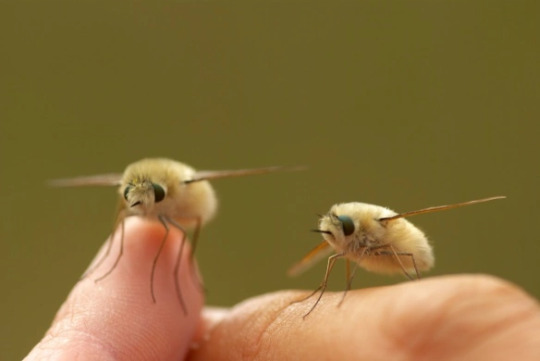
Bee fly - Bombyliidae
Bee flies are docile, meaning they don't sting or bite.
Young adult bee flies are considered to be parasitic, often producing larvae that can kill a host by infesting their nests and eating the young. Their hosts consist of bees, wasps, grasshoppers, ants, caterpillars moths, and beetles.
Female bee flies protect their eggs by scooping up and covering them with gravel and sand. This camouflages the eggs.
Source: https://www.nhm.ac.uk/discover/bee-flies-cute-bee-mimic-with-a-dark-side.html
#animal facts#fun facts#animals#insects#bee fly#Bombyliidae#insect facts#silly little guy#silly creature#cute animals
2 notes
·
View notes
Text
Did you know, that hornets are actually quite peaceful insects? Hornets are much more tame than the common wasp as they only attack when someone or something is within a certain radius to their hive and they feel threatened. Otherwise, they are great pollinators and predators to other insect pests that are harmful to gardens.
It is improbable that they will sting as long as they are left alone.
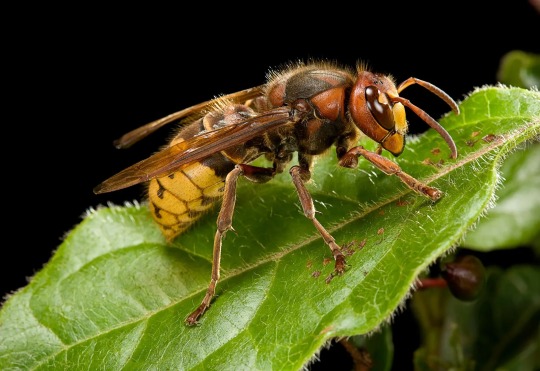
#animal facts#animals#facts#random facts#insect facts#insect fact#insects#insect#hornet#hornet facts#hornet fact
9 notes
·
View notes
Text
a bug
but the size of a horse
would it eat you or let you ride it?
12 notes
·
View notes
Text
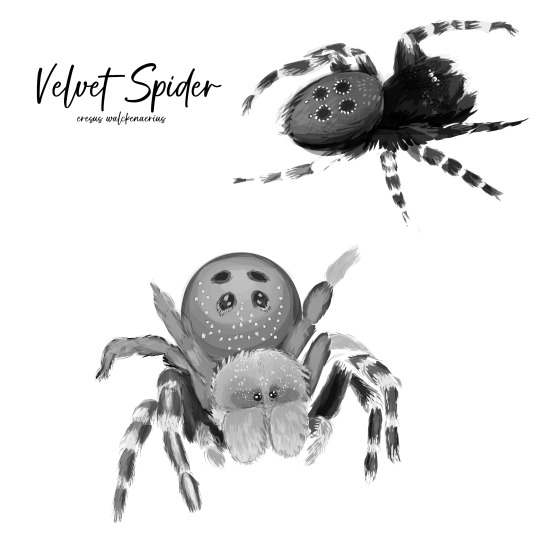

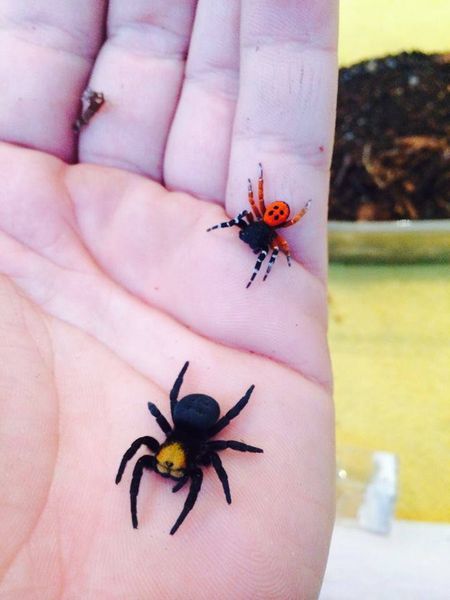
Here's my Sketch of a Velvet Spider! Also known as a Ladybird Spider. They are as soft as velvet and super cute! They come in many bright colors.
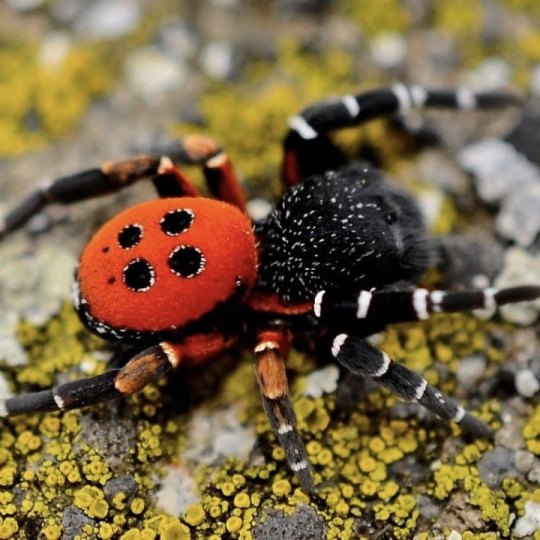
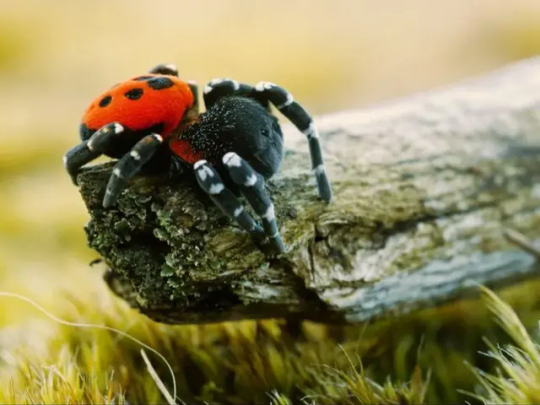
Velvet spiders look like lady bugs with little spots. They are native to Ancient Greece and many parts of Europe. Many people actually keep them as pets, as they are a social species.

I hope you enjoy these little guys as much as I do! 🕷💕
#spider#eresus#ancient greece#greece#lady bird#lady bug#arachne#arachnids#insect facts#insects#nature sketch#pet spider#spider enclosure#Spider Terrarium#terrarium#jumping spider#velvet spider#entomology#spider facts#insect collection#insect#zoology#bug art#insect art#bugs#spider art#illustration#kawaii#cute bugs#cute spiders
8 notes
·
View notes
Text
It's "Fun Fact That's Actually A Little Disturbing But I'm Crazy So Whatever" time:
If you ever see a bunch of ants walking in a circle, just know that they're trapped like that. One ant is following the pheromones of a other ant that might be following another ant. And that ant is following another ant. So ok and so forth. So essentially, they're just going to keep going until they die, which could be any number of reasons since they literally cannot stop.
#fun facts#not so fun facts#animal facts#ants#insect facts#is this technically entomology?#briefnutstudent random facts
3 notes
·
View notes
Text
Ants don’t have ears but listen by the vibrations of the ground through their legs
so if you put them on a speaker at full blast,
8 notes
·
View notes